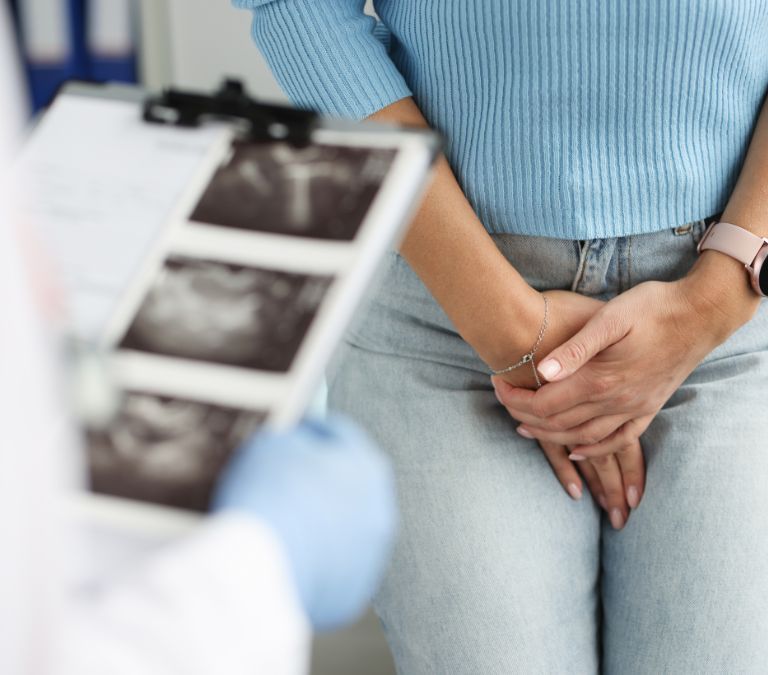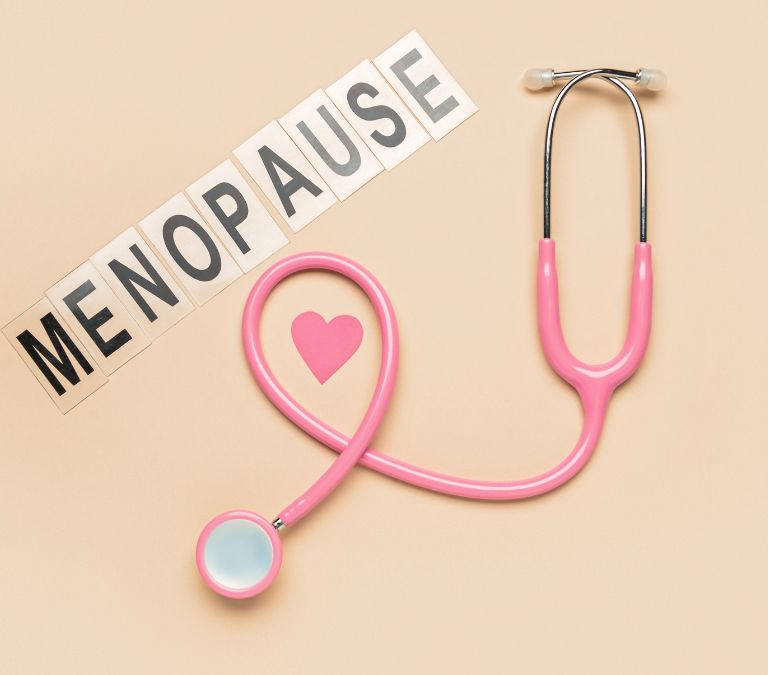Menopause is a period of transition for all women during which a woman’s menstrual cycle shuts down for a year or more. The significance of this period is the end of ovulation and hence reproduction. These changes are known to come with many transitions and some health issues.
One of the issues of contentions is the emergence of fibroids. It is not surprising that many women always seek information on how to deal with fibroids after menopause. As your ovaries stop producing hormones such as estrogen, the release of eggs is inhibited, and the menstrual cycle stops. These changes trigger certain aspects of a woman’s physiology, leading to the emergence of fibroids and other health-related issues.
Leiomyomas or uterine fibroids refer to the degeneration of very small tumors that grow in a woman’s uterus. These tumors are mostly old or benign, although some can become malignant and lead to cancers or even cause serious pain.
The medical cause of fibroids is not completely known, although it is very prevalent among women, especially during menopause. Based on research, about 84% of women will develop fibroids at about age 48 and above.
Fibroids are of different sizes, some benign and some malignant, and these sizes can shrink or increase over time. The symptoms of fibroid growth might be mild or severe depending on how serious it is, depending on the individual.
Although it is not completely known when and how fibroids form, studies have shown that fibroids’ emergence coincides with the body’s production of estrogen. The transition of a woman’s body affects her tendency to have fibroids.
These benign tumors, known as fibroids, are associated with younger women, which produce massive amounts of estrogen and sometimes are of childbearing age. According to some surveys, menopause is associated with a decline in fibroids or fibroid-related issues.
How Fibroids Affect Your Hormones

The link between the hormonal cycle and the emergence of fibroids cannot be ignored. In menopause, it has been noted that the hormones released are fewer than normal since the woman is on the verge of total reproductive exit.
This hormonal decline helps to shrink fibroids most of the time. It is so effective that hormonal therapy has been used to treat fibroids after menopause.
A woman produces estrogen and progesterone, and most times, the availability of either of these hormones increases the tendency of fibroid growth. Although, women of menopausal age are somewhat safer because the risk of fibroid growth is lower for them due to their reduced production of hormones.
Declining hormones help shrink existing fibroids, which is why most menopausal women live without fearing fibroids.
The hormones-fibroid link
Human hormonal imbalance manifests in the uterus in the form of an enlarged uterine wall or the emergence of fibroid in the uterus. These fibroid tissues are often benign and non-cancerous. Research has discovered that genetics and hormonal coordination play a vital role in the growth of fibroid in the uterus of menopausal women.
Fibroid begins to grow when the woman’s body produces estrogen, which is at the beginning of menstruation. Studies have also shown that hormonal imbalance before and before menopause is one of the leaf causes of fibroids during menopause.
During a woman’s active reproductive years, the percentage of estrogen to progesterone produced is meant to maintain a certain ratio or balance. The increased production of estrogen mostly alters this balance. So, the estrogen level is higher compared to progesterone. This condition of estrogen dominance can lead to an enlarged uterus or the growth of fibroids.
The hormones that affect fibroid growth (Estrogen and Progesterone)
The connection between hormones and fibroids is much more than it is anticipated. The main hormones that affect fibroid growth in menopausal and premenopausal women are estrogen, progesterone, and testosterone. Testosterone is believed to be a male hormone, but it is also produced and utilized by the female gender.
A recent study deduced that high estrogen and testosterone levels increase the risk of fibroid growth and that those with low levels of these hormones have a lesser tendency to develop fibroid tissues.
Effect of Premenopausal and Postmenopausal Hormonal Levels on Fibroid growth

The life cycle of women is faced with a constant hormonal cycle. One that oversees the various stages of her life with the changes that follow. During menstruation and before the inevitable menopause, hormonal level increases until menopause shows up.
During menstruation, the estrogen and progesterone level drops categorically in a cyclic manner until the time ovulation is reached. About 14 days after this period, ovulation occurs; by this time, the estrogen level increases, aiding the ovulation process.
If pregnancy occurs, the level of estrogen and progesterone is maintained, but it doesn’t. The cycle of decline and rise continues. It is the constant fate of a woman’s hormones.
This hormonal fluctuation affects and controls the growth of fibroids because when the level is higher, the growth is enhanced. Also, when it reduces, the growth reduces.
The perimenopausal period is characterized by a decline in the hormonal level in women since less estrogen is produced. This decline begins several years before menopause, and by menopause, the hormonal level is already very low, leading to a significant effect on the growth of menopause. Of course, declining hormonal level affects the woman’s health and fibroid, among others.
Effect of Fibroid Receptors on Estrogens and Progesterone Growth
A recent study has discovered estrogen receptors in fibroid tissues. And the study deduced that these receptors are why a fibroid tissue has a larger concentration of estrogen hormone than other tissues around it. And it makes more sense when you consider that fibroid tissues thrive whenever there’s a high amount of estrogen. Progesterone receptors were also found in the fibroid tissues, cementing that increased hormonal levels greatly increase the risk or tendency of fibroid growth.
Who Is Likely to Have Fibroids (Risk Factors)
Fibroid growth is a scary motion to most women. And although it is not a death sentence, it doesn’t sound nice! Well, that’s funny because many women have fibroids, and it isn’t a death sentence nor an element of stigmatization.
It has been proven that fibroid growth thrives with hormones like estrogen and progesterone. And though you can control it, many people are scared that they might be at risk of developing fibroid tissue.
In menopause, the risk of fibroid tissue growth is greatly reduced, and due to the reduced amount of hormones, the fibroid either shrinks or disappears. With this, one can say menopause is the cure for fibroid, right? Well, I wish that were true. A lot of women still develop fibroids during menopause.
Here we will talk about the factors that increase the susceptibility to fibroid tissues.
Your Age
Not all ages of women are susceptible to fibroid growth. Cases of teenagers and very older women are extremely rare. Active women between the ages of 25 and 45 are usually at risk of fibroid growth due to their consistent hormonal cycles. Women that have passed menopause also face the risk of fibroid growth.
Your family history
A fibroid is notably genetic; having a family history of fibroid increases your odds. So, if your mum or grandmother had fibroid, the tendency is that you might have it as well.
Exposure to Stress
The dangers of stress are innumerable, one of which is fibroid growth. Scientists have discovered that high levels of stress increase the growth or tendency of the growth of fibroids. It is a relationship between stress and fibroids.
Nutrition
The food we eat goes a long way. According to recent research, the intake of fruits, fiber, and vegetables reduces the risk of fiber. Also, we must take the required supplements prescribed to us by our Physicians.
Vitamin Deficiencies
Based on recent studies, deficiency of Vitamins, especially Vitamin D, increases the risk of fibroid.
Ethnicity
It has been discovered that black women are more susceptible to fibroid growth. Be it pure African or African American, Fibroid is more prevalent amongst blacks.
Body Weight
Women with obesity are at a very high risk of fibroids. Somehow, an overweight lady has about 5 times more tendency to get a fibroid than a normal-weight person.
Symptoms of Fibroids
Most fibroids do not have any notable symptoms or pain. Most cases of fibroid tissue growth are benign and mild. And would go without medical intervention.
But, there are exceptions. Sometimes fibroid tissue can grow into a large mass, often causing discomfort and other symptoms one cannot ignore. The asymptomatic fibroid tissue is mostly mild, while the symptomatic ones can be lethal.
Fibroid tissue can grow on anyone; it affects young, healthy women as well as menopausal women too, although it has its peculiarity in symptoms and effect.
Women who experience fibroid growth after menopause are said to have more severe symptoms. A pelvic exam can determine what’s wrong when the fibroid is asymptomatic.
Some of the experiences induced by fibroid growth for menopausal and younger women include.
- You might experience fever, nausea, and recurrent headaches during the early stages.
- You might experience difficulty urinating.
- The loss of blood from menstruation might lead to anemia.
- Menopausal women experience painful menstrual-like cramping, which is abnormal in menopause.
- The lower abdomen might become awkwardly full, a condition known as bloating.
- Chronic vaginal discharge.
- Severe distention or swelling of the abdomen makes you look pregnant, although you’re not.
- Some women experience severe lower back pain.
- You might experience leakage of urine, a condition known as incontinence.
- Sexual intercourse might become very painful.
- Excessive or painful bleeding during your period (menstruation).
- You might begin to urinate frequently, especially in cases where the fibroid presses against your bladder.
- Frequent constipation is also noticed.
Dealing with Fibroids after Menopause

Although fibroid is less common in women during menopause, many women still have fibroid issues during and after menopause.
There is a large number of preventive methods as well as curative steps that medically help to curtail the issue of fibroid in women during menopause.
Most times, fibroid tissues are asymptomatic, meaning you might not even know. The good thing is that most of these fibroid tissues do not need medical attention; they normally shrink on their own.
But, there are exceptional cases where it becomes harmful, and you begin to experience certain symptoms like prolonged periods, bleeding, abnormal menstruation during menopause, and spotting in younger individuals.
When you begin to experience any of these symptoms, you should first visit your doctor for a proper diagnosis to know which of the many treatment options you should use.
This treatment is wholly based on the severity of your fibroid tissue, the location of the fibroid, and even the kinds of symptoms you experience.
Thanks to medical advancement, there are a lot of means by which the not-so-harmful but harmful fibroid tissue can be removed or shrunk. Below are the categories of treatment you can get.
Drugs and Medication

Using prescribed drugs is usually the most basic means of treatment regarding fibroids during menopause and any other disease; it is less complex yet very effective and affordable.
Drugs and medications are not limited to capsules but even the administration of certain hormonal supplements.
Below are the drugs or medications administered to cure fibroids during menopause.
- Use of GnRH Agonists
GnRH agonist is a drug that helps to inhibit the production of hormones by the gonads (testes and ovaries). So, upon the administration of the drug, the ovaries will begin to produce less estrogen and progesterone, which would eventually lead to the shrinking of the fibroid tissue.
Research has found that GnRH agonists can stop menstruation without adversely affecting fertility.
Although this method is prevalent amongst the younger, reproductive women, menopausal women with higher than normal hormone levels can make use of this. Some women still see their period in their later 40s and early 50s leading to fibroid growth.
This set of women can reduce the risk of fibroid by using GnRH agonists to prevent the release of estrogen and progesterone, thereby shrinking the fibroid.
When administered to younger women, GnRH agonists sometimes have side effects of symptoms relating to menopause, like the risk of osteoporosis, hot flashes, vaginal dryness, etc.
It should be noted, however, that treatments involving GnRH agonists are meant to last for a short time. It could be shortly before surgery to shrink the fibroid either way,
- Use of Birth Control Pills/Hormonal Birth control
Again, it is popular knowledge that the probability of a woman giving birth during menopause is very low, yet I’d say there’s still a chance since all humans have unique anatomy and body physiology.
It is also important to note that women with fibroid issues during or after menopause are mostly at the end of childbirth.
Childbirth during menopause is considered a risk because the woman’s anatomy at that period does not support a healthy pregnancy. It could harm the woman and the child, with a high risk of genetic or chromosomal abnormalities. So, birth control pills are very important at this age, especially if the woman is still sexually active.
These pills are in high demand by women who have symptoms of heavy periods because they contain estrogen and progestin, which helps reduce blood flow during menstruation. Menstruation will stop over time when these pills are administered and used properly.
However, birth control pills may have side effects, including constant propelling headaches, tender breasts, increased blood clots in menopausal women and smokers, water retention, etc.
Although certain surveys and reviews have deemed this method very effective in preventing or shrinking fibroid growth, the working principle is still not fully understood.
Also, oral contraceptives are effective in the regulation of ovulation. These contraceptives inhibit the release of estrogens which can help shrink the fibroid. Progesterone intrauterine devices are also known to have positive effects.
Surgical Procedures
After medication, the next step is usually surgery. Sometimes, the bony fibroid tissue comes off surgically after medication. Other times, medication might prove ineffective, so the person undergoes an operation for the fibroid. Undergoing surgery can be very effective for menopausal women as the cause of their fibroid growth is sometimes unknown.
Fibroid tissue can be lodged anywhere in the woman’s body. The type of surgery is named after and depends on where the fibroid is located. Some of the most effective surgical procedures used are:
- Myomectomy
Fibroids found in the endometrial wall of the uterus can be surgically removed by a process called a myomectomy. For women who still need children, this method would be very effective.
Although women in menopause were without the risk of not having children, myomectomy is still a very effective method of operating menopausal fibroid. Myomectomy is mostly for operating very benign and shrinking fibroids. This method might not be effective for very complex and serious cases.
- Hysterectomy
Sometimes the fibroid tissue eats deep into the uterus corrupting certain parts. A hysterectomy is used in times like that when the affected parts of the uterus need to be removed.
Hysterectomy can be partial or total. It is effective in severe cases and extremely large fibroids. Total hysterectomy is the most effective method as it prevents the return of fibroid in the area.
Although recent studies have shown that hysterectomy can have side effects on the patient after the surgery. Women in menopause already might face a risk of sexual displeasure and lower libido.
Ablation of the Endometrial Wall
Fibroids located in the early part of the endometrium can be removed by ablation or removal of the uterine lining. Depending on the severity and size of the fibroid, ablation can be used in the leave of hysterectomy.
Embolization of the Uterine Fibroid
Research and practice have shown that when there is a shortage of blood supply to the fibroid, it shrinks; hence, medical professionals can now treat fibroid issues by cutting off the blood supply to the areas lodged by the fibroid tissues. It is a basic but delicate surgery that’s necessary and needs the right amount of precaution.
This procedure is very effective for menopausal women and has a success rate of about 95% in successful surgeries, although it poses a threat to pregnant women or women that intend to get pregnant in the future.
Although this method is very effective, it might not be suitable for certain large sizes of fibroids or fibroids that are located in very delicate areas that require constant blood supply.
Other methods of dealing with fibroids after menopause
- Adjusting your way of life
Fibroid growth might be due to many reasons beyond control, yet even the tiniest buts like the food we eat and exercise habits can help manage or prevent fibroid growth.
It is good to eat healthy meals that do not encourage hormonal outbursts. Healthy exercises by women, especially those in menopause, will help greatly reduce the risk of fibroids. Also, you should avoid alcohol, opioid, and other similarly unhelpful substances.
- Insertion of Hormonal intrauterine devices
Contraceptive devices like the intrauterine device can help maintain the hormonal balance in the uterus of menopausal women. These devices are inserted in a woman’s uterus during menopause, especially if she still has hormonal outbursts.
The major mechanism of these devices is the inhibition of the buildup of the uterine lining. They contain artificial hormones called progestins.
These hormones prevent the buildup of the uterine lining during menstruation; hence it destroys the lodging sites of the fibroid. This method is very effective and has little or no side effects.
Frequently Asked Questions
- Can fibroids develop after menopause?
Although most people debunk the idea, fibroid growth is also prevalent amongst people who have gone past or are presently in menopause. The main cause of this occurrence is not fully understood yet, but hopefully, more studies should unravel these mysteries.
- What do fibroids look like?
Fibroids are mushroom-like tissues that are attached to the uterus or other organs. Up close, they appear smooth muscle tissue but in the shape of a mushroom.
- Are fibroids cancerous tissues?
No, they are not. Normally fibroids are just benign tissues that grow in a woman’s body. They have mild symptoms and toxicity, although sometimes, they might be very harmful with severe effects.
Cases of fibroids leading to cancers are very few or non-existent still. There’s that slim possibility that fibroid tissue might become cancerous.
- What causes uterine fibroids?
The main cause of uterine fibroids is not yet known. However, several reasons, such as hormonal imbalance and declining estrogen production, are said to have significant effects on the growth of fibroids.







